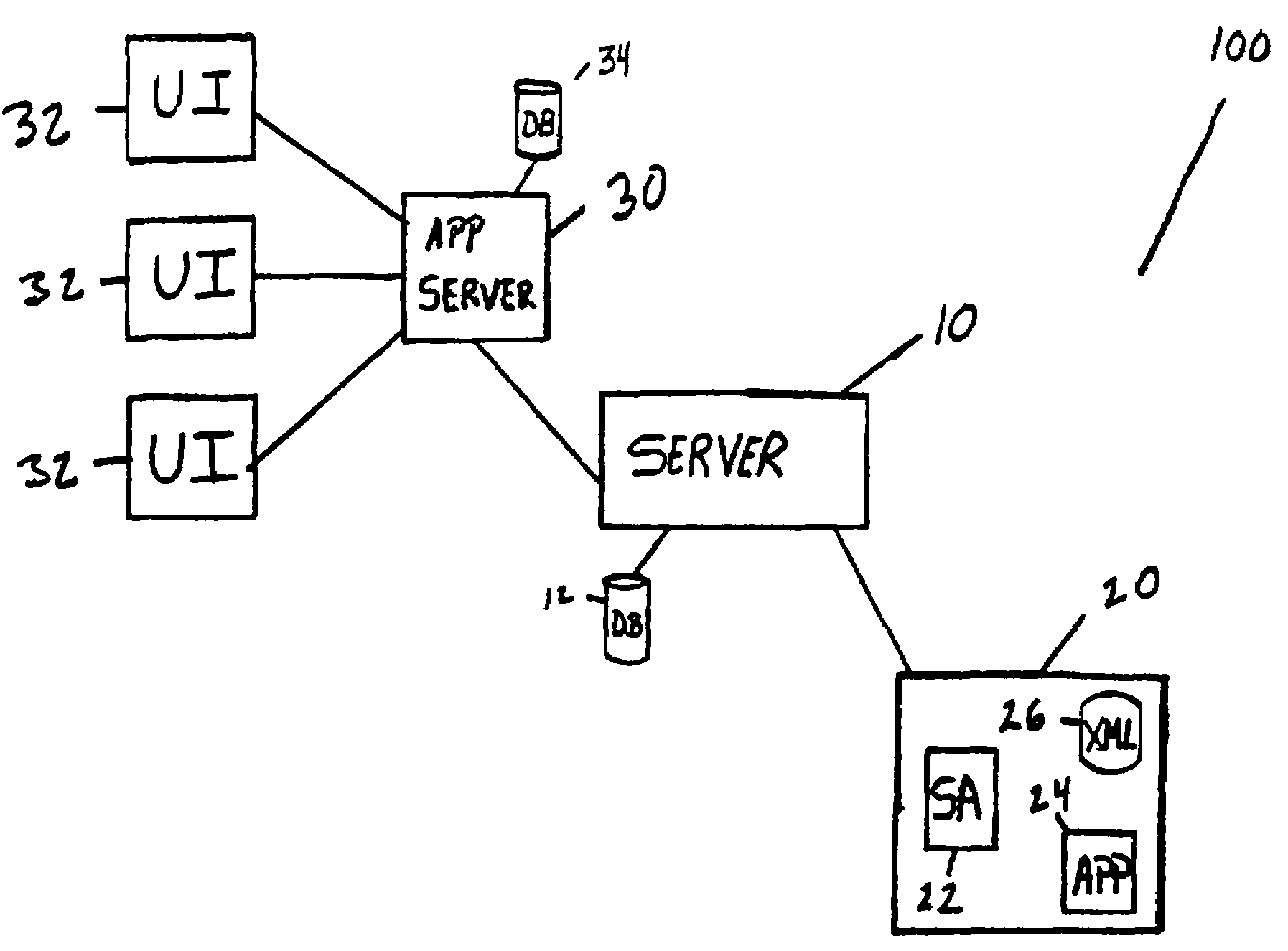Remote application publication and communication system
a communication system and application technology, applied in the field of remote application publication and communication system, can solve the problems of unusable access to other databases, unusable access to pdas and mobile computing devices, and unusable data for integration (or further processing), and cost extra money to maintain
- Summary
- Abstract
- Description
- Claims
- Application Information
AI Technical Summary
Benefits of technology
Problems solved by technology
Method used
Image
Examples
Embodiment Construction
[0021]The present invention is a system and method that permits the publication of applications on local computers that are connected to distributed networks in a manner that allows remote users and computers on the network to communicate with the published application. Such a system includes, for example, monitoring software that is published on a computer for the purpose of monitoring and tracking the security, environment, or other condition existing within an office building, hotel, or other facility. A user located at a remote location, such as at the offices of a security service, fire station, etc., may wish to have real-time access to the data collected and generated by the published application and, optionally, for proper entities to be notified when certain conditions arise.
[0022]With reference to FIG. , in an embodiment of the present invention, a central server 10 is in electronic communication with a remote application computer 20. The communication can be achieved via ...
PUM
 Login to View More
Login to View More Abstract
Description
Claims
Application Information
 Login to View More
Login to View More - R&D
- Intellectual Property
- Life Sciences
- Materials
- Tech Scout
- Unparalleled Data Quality
- Higher Quality Content
- 60% Fewer Hallucinations
Browse by: Latest US Patents, China's latest patents, Technical Efficacy Thesaurus, Application Domain, Technology Topic, Popular Technical Reports.
© 2025 PatSnap. All rights reserved.Legal|Privacy policy|Modern Slavery Act Transparency Statement|Sitemap|About US| Contact US: help@patsnap.com


